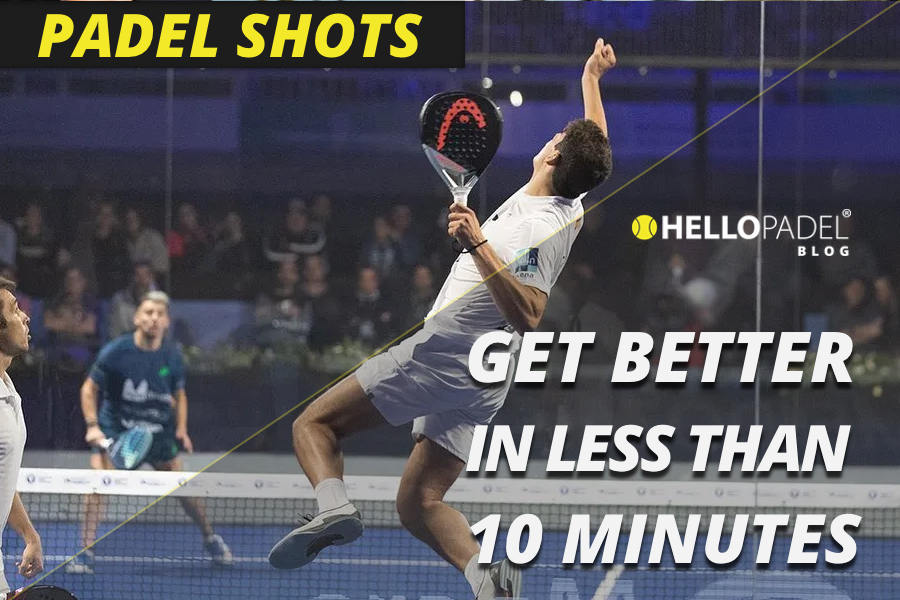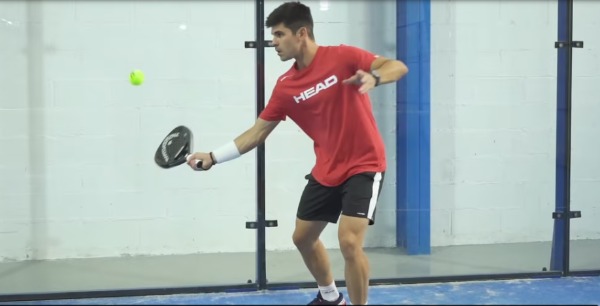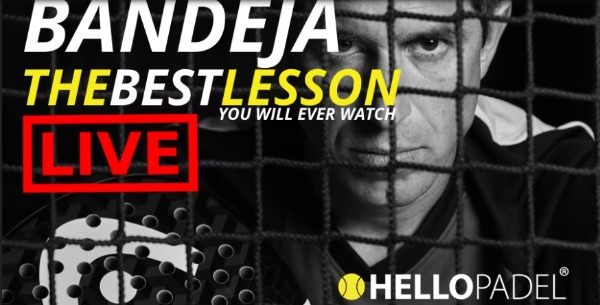1. INTRODUCTION TO PADEL SHOTS
Everyone knows the sport of tennis and most of us know its strokes, but with padel, do we know all the padel shots that exist? There are more than just a few!
So, in the following article, we are going to take a look at the whole repertoire of padel shots.
Let’s get to it!
2.THE DIFFERENT PADEL SHOTS
We will look at all the padel shots one by one. But before we start, it is interesting to know that there is no universal consensus as to whether some technical executions are considered independent strokes or whether, on the contrary, they are a variation of a stroke. For example, for some people, a low wall forehand would be a forehand shot in which it has to bounce off the glass, but for others, it would be a different shot. And the same goes for the return, is it an independent stroke or a forehand or backhand stroke?
In any case, the important thing is to know the different technical movements that exist in padel and when to use them.
2.1.
– THE SERVE
The serve is the shot to begin all points. If you miss the first serve, you have a second chance.
The two rules that most affect the serve in padel are:
You must let the ball bounce before hitting it.
The maximum height at which the ball can be hit is at the waist.
As a general rule, the serve is usually directed towards the side wall and unlike tennis, the speed of the serve is not a determining factor as the objective after serving is to reach the net and take the initiative of the point. Furthermore, Serving faster means less time to get to the net. And in padel, we could almost say that there is no such thing as an “ace” as it is very difficult to make one.
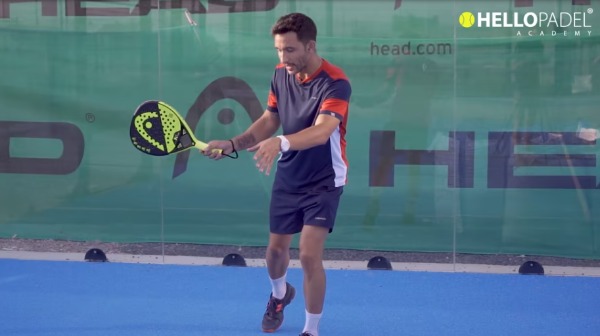

THE SERVE-SANYO
2.2. – FOREHAND AND BACKHANDS
The forehand and backhand padel shots are possibly the simplest strokes and the first to be taught when we start playing padel.
These strokes consist of hitting the ball at the side of our body, having let it bounce only once on our side.
The aim with these strokes is to be solid, not to miss, in order to be able to work the point and try to get the initiative or force the opponent to make a mistake.
It is important to remember that forehand and backhand crosscourt strokes are safer than down the line strokes, as playing crosscourt is more natural from a physiognomic point of view and because we will have more distance than when we play down the line.
Variations of the basic forehand and backhand strokes:
Flat forehand
Slice forehand
Topsin forehand
Flat backhand
Slice backhand
Topspin backhand
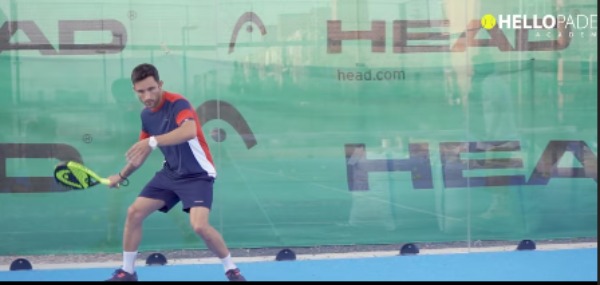

SANYO – FOREHAND & BACKHAND
2.3. -The return
The return is the stroke (forehand or backhand) used to return the opponent’s serve.
A shot thatis not often practised during training sessions. However, both the serve and the return are very important strokes.
As a general rule, it is a good idea to return down the line or cross court, depending on where the server is coming from, as that is the player who is on the move towards the net and is less well positioned.
We only recommend a lob return if you have an easy ball, and you are sure that you are going to execute it well, because if it is too short, your opponent will be able to hit a smash and will have chances to win the point.
2.4. PADEL SHOTS – Off the wall
If there is one thing that stands out in padel, it is undoubtedly the game with walls or glass. No one who plays padel can deny that they add fun and difficulty to the game.
As a consequence of this characteristic of the game, we find ourselves with the off the wall shots.
We can distinguish three types of wall shots:
Back wall return
Off the Side wall
And the double wall rebound
The off the wall shots are basic but fundamental padel shots. Control of the ball is key, and we must not take the risk of missing. This stroke will be the basis to be able to execute correctly later on, an aggressive return of a back wall shot that bounces up relatively high.
The type of shot we execute and its objective after the ball bounces on the glass will depend on many factors, such as the type of off the wall we are facing, the height of the bounce, the distance at which the ball bounces, the position of the opponents…
2.5. WALL DECENT (bajada de pared)
There are differences between an “OFF” and a “DOWN” from the wall shot, and therefore, we should separate them.
The wall downswing is the aggressive version of the normal off the wall stroke. It is an attacking stroke, and its objective is to accelerate the ball a lot to win the point or force an error.
It is a risky shot and there are more chances of missing it, but with practice it can win us many points.
Before risking this agressive version, we should master normal off the wall shot.
For more on wall shots, check out our coaching area HERE
2.6. PADEL SHOTS–The lob
The lob is perhaps, especially at amateur and intermediate levels, one of the most underrated padel shots, when the reality is that it is one of the most important strokes and one that we should master the most if we want to be good players.
The execution of a lob is not always a defensive stroke, on the contrary, the execution of a good lob is actually an offensive stroke.
The main objective of the lob is to overtake the opponents from above and immediately go up to the net in order to gain the initiative of the point.
In the case of not being able to surpass the opponents, we should make sure that our lob is going to make it as difficult as possible for the opponent’s next shot, because if we hit a bad lob, too short or too low, we will find ourselves in a very complicated situation and difficult to recover.
The direction of the lob will depend on our position and ease to execute it, as well as the situation of our opponents.
2.7. PADEL SHOTS -The Chiquita
This stroke with this peculiar name, consists of hitting the ball at a very low speed, trying to get it just over the net and down quickly to the feet of the opponent at the net.
The aim of this, is that the opponents have to hit the ball from well below net height, the closer to the ground the better. This will force them to lift the ball gently. If we execute it well and get up to the net quickly, we get a very advantageous situation and could execute a winning shot just by sending the ball softly to the back of the court.
Although it is not a spectacular stroke, it is of high difficulty, as it requires a lot of intention, body control and a lot of touch to accompany the ball with the right force and then go up to the net to define the point.
2.8. PADEL SHOTS – The back wall (against) (contrapared)
The back wall is generally used as a last resort when it is not possible to return the ball directly to the opponent’s court.
Keep in mind that if you do not give it the necessary height and depth, it will be a very easy ball for the opposing partner. It is advisable to hit trying to get a good height and in this way, also have time to recover our position the court.
2.9. – Forehand and backhand volleys
Volleys consist of hitting the ball before it hits the ground. As a general rule, we play these when we are close to the net, although there is nothing that prevents us from hitting a volley from the back court glass.
The aim of the volley in padel is to keep the opponent’s partner at the back of the court, to force a fault and to create free spaces.
It is recomendable to hit the first volley to the centre of the court, where there is more free space and, subsequently, start opening up the court.
Maintaining the position at the net and playing a good air game and volleys is what will allow us to win points and force errors.
When the pairing are at the net, communications is key, as a ball in the middle can often cause doubts or confusion as to which player has to return it.
Also, when you are at the net, you have to be very alert and react quickly as you will have less time before the ball reaches you.
2.10. – The bandeja
The bandeja in padel is one of the most characteristic padel shots of this sport.
A solution to those mid-height lobs from the opponent that cause doubts between letting them bounce and losing possession of the net, or making a shot at a non-ideal height that does not win the point.
The hitting zone is usually in the middle of the court, and the height of the shot is halfway between a volley and a smash.
In general, it is recommended to play cross-court bandejas and, if you can execute it comfortably, and it is not too risky, to look for the double wall in order to make it difficult for the opponent to return it easily..
The objective of the bandeja is not to win the point, but to not to lose the position at the net and to keep the initiative of the point. So, after playing a bandeja, it is necessary to quickly get back up to the net to accompany the partner who will probably have stayed at the net.
2.11. – The vibora
The vibora is one of the most characteristic attacking strokes in this sport along with the smash.
It is an advanced level shot and is undoubtedly one of the most difficult to execute correctly and effectively.
Although its hitting height and execution area are similar to that of the bandeja shot, there are differences with respect to the latter, such as giving the ball a more side spin, more power, different intention..
The aim of the vibora is to win the point by forcing the opponent to make a mistake or that he/she leaves us a very comfortable ball and then finish it off.
Norally we play it towards the corners so that the ball goes as fast and low as possible and does not rise up.
It is not advisable to teach it until you reach competition levels.
2.12. –The smash
Considered by some to be the only shot that we can consider definitive.
It is the shot whose only intention is to finish the point. Therefore, you have to choose well when to play it. If you don’t do it well, you could find yourself imediately on the defense again or directly losing the point..
It is advisable to perform it as high as possible, extending the arm and the paddle above the head, placed sideways and putting the weight of the body on the stroke.
As for the direction and depth of the shot, the paralllel smash, bouncing before the opponent’s service line, is usually the most effective, as it does not allow help from the partner and the reaction time of the opponent to defend the ball is less.
2.13. – The drop shot
The drop shot, more than an independent stroke in itself, would be the execution of a forehand or backhand stroke, or a forehand or backhand volley, which consists of passing the ball to the other side of the court but as close as possible to the net so that the opponent cannot reach it.
Although it is a very soft and slow stroke, we could consider it an attacking shot, as we are trying to win the point.
The more advanced players usually use it with a cutting effect so that the ball slows down or even spins backwards.
We must keep in mind that this is a risky shot, as if we do not execute it well or at the right moment, we will either miss it in the net or we will leave a long drop shot, and we handing an easy ball for the opponent.
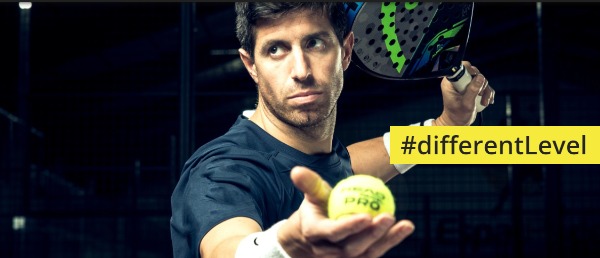

Want to know more?
TO LEARN FROM THE PROS AND REACH A #DIFFERENTLEVEL: HERE
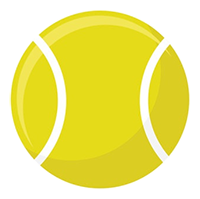 Upgrade now
Upgrade now
